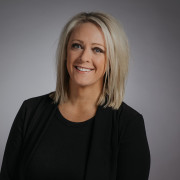Four tips to help reduce overdrafts

There’s really nothing positive about overdrawing your account. It ranks right up there with having cavities filled. Both fill you with dread and cost money and time to fix. And in the case of both cavities and overdrafts, the best remedy is prevention through daily upkeep and having some insurance in place. The good news is the daily ritual is way less painful than flossing.
Ongoing maintenance
Awareness of your balance and pending transactions is the first step to preventing overdrafts. There are very few of us who would knowingly overdraw our accounts (except in an emergency, but I’ll get to that later). It’s a good idea to log in to UBTgo online and mobile banking on Mondays and take stock of your account. If something went wrong over the weekend, you’ll have by the end of business on Monday to fix it. On a daily basis, you can use the Quick Balance feature on the mobile app to quickly check your balance. You don’t even need to enter your password, making this a super-quick way to keep an eye on your account.
Proactive monitoring
e-Alerts are a great tool you can set up as an extra layer of protection. You can set up alerts to receive a quick message for low balance, large transactions, and many other kinds of transactions. This is a helpful tool if you’re forgetful about checking your account regularly.
Having a backup plan
Sometimes cavities happen, which is why I’m glad I have insurance. Like insurance, there are backup plans available for your account to help protect you from overdrafts. Most banks offer a couple of different options. Automatic transfers from another deposit account to cover a negative balance are usually available, and some banks may charge a small fee per transfer. If you have an emergency savings fund built up, this might be a good option for you. Be aware that most savings accounts have limitations on the number of transfers out per month, so you’ll want to be careful about overusing the service.
The other option is a line of credit that is attached to your checking account. Sometimes these have either an annual fee, a per-transaction fee, or both, in addition to interest assessed on whatever portion of the credit line you utilize. However, these fees are often lower than overdraft fees, so this could be a better option if you know your account could go negative fairly often.
ATM and point-of-sale debit card purchases
Customers have a choice whether to participate in a bank’s overdraft protection program. A bank’s overdraft protection service typically covers checks, automatic bill payments, ACH transfers, and other transactions made using your account and routing numbers. Additionally, customers must choose to opt in before the bank can authorize everyday non-recurring debit card or ATM transactions that exceed your account balance. This is called the “opt-in rule” — if you opt in, the bank may draw your account negative in order to process these transactions; however, you will be assessed a non-sufficient funds paid item fee to do so. Because this is a discretionary service provided by the bank, these transactions may also be declined, which will result in a non-sufficient funds returned item fee. If you choose not to opt in, the bank will decline your ATM withdrawals and debit card transactions at point-of-sale terminals if you don’t have enough money in your account to cover the withdrawal or purchase. If you don’t opt in but the bank pays an ATM or non-recurring debit card transaction when your account is overdrawn, the bank cannot charge you an overdraft fee. This is an optional service offered to you, so you can feel free to make the decision that will work best for you and your account.
At UBT, we call this service Overdraft Privilege — it’s a discretionary service, which means we do not guarantee that we will authorize and pay a transaction presented for payment if the account does not contain sufficient funds.
Hopefully these tips are helpful to you in preventing overdraft fees. Looking for more tips on what to look for in a free checking account? Click here.
Learning Center articles, guides, blogs, podcasts, and videos are for informational purposes only and are not an advertisement for a product or service. The accuracy and completeness is not guaranteed and does not constitute legal or tax advice. Please consult with your own tax, legal, and financial advisors.





